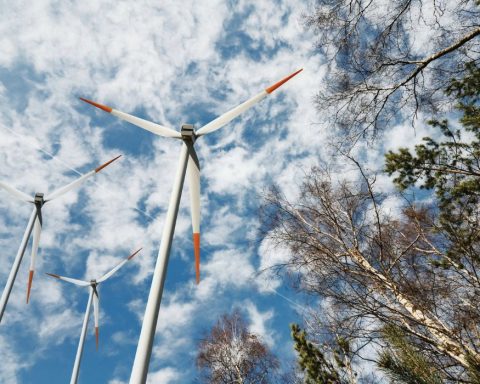The experts say that reducing global carbon emissions to net-zero by 2050 will require new investment of US$1 trillion to US$2 trillion a year to shift buildings, transportation and industry to renewable electricity sourced from wind, solar and hydro.
Fortunately, taxpayers won’t have to pick up the whole tab. The International Energy Agency, a policy think tank in Paris run by the world’s energy ministers, says the zero-carbon shift can be funded mainly by investors. A new IEA study finds that publicly traded renewable-energy companies are already outperforming fossil-fuel stocks – without exposing investors to additional risk.
The study, produced with the Centre for Climate Finance & Investment (CCFI) at London’s Imperial College Business School, compared the five- and 10-year investment performance of 545 oil, natural-gas and coal producers in 55 countries against a portfolio of 208 renewable-energy and equipment companies from 34 countries.
The result: in advanced economies, renewable power delivered a 10-year total return of 727%, compared to just 31.6% for fossil fuel companies. In riskier emerging markets and developing countries, the renewable companies still delivered, posting a 10-year return of 136%, versus 113.8% for fossil fuel firms.
The study also found that renewable-power portfolios are less driven by broader market trends than fossil fuel portfolios, a good sign for investors seeking diversification. It also discovered that renewable companies showed greater resilience when oil prices tumbled in 2014 and during the pandemic shock of early 2020.
“Overall, our analysis demonstrates a superior risk and returns profile for renewable power in both normal market conditions and amidst recent events,” notes the report, entitled Clean Energy Investing: Global Comparison of Investment Returns. The authors hope their findings will encourage investors and policy-makers alike to boost demand for renewable projects, in the confidence that the cleantech revolution is well underway.
CCFI executive director Charles Donovan noted there’s nothing new about the positive performance of renewable energy stocks – we just need decision-makers to pay attention. “It’s been the same story for more than a decade, yet total investment is still lagging,” he said in March on the report’s release. “National regulators, particularly in the United States, must get to work on the reforms needed to level the playing field for clean-energy investors.”
IEA official Tim Gould noted that showcasing the investment heft of clean energy is an important step in mobilizing international capital. “But much more still needs to be done to link sources of sustainable finance with the areas of greatest need, especially in emerging markets and developing economies.”
The report breaks new ground in demonstrating clean energy’s performance in developing markets, where clean energy faces greater uncertainty and higher costs of capital. But because all our futures depend so much on decisions now being made in China, the report also studied the performance of Chinese companies alone. The news is good: over 10 years, China’s portfolio of 105 fossil fuel companies offered investors a 41.1% return, while its 74 renewable-power companies delivered a 243% return.
The authors admit their report just scratches the surface of the clean energy sector; 90% of clean power is produced by non-listed organizations or by diversified companies that are not primarily energy producers. But that’s not a flaw, it’s a future. The study “points to the untapped potential of the listed capital markets as a source of funding for pure-play renewables companies and their investments.”







